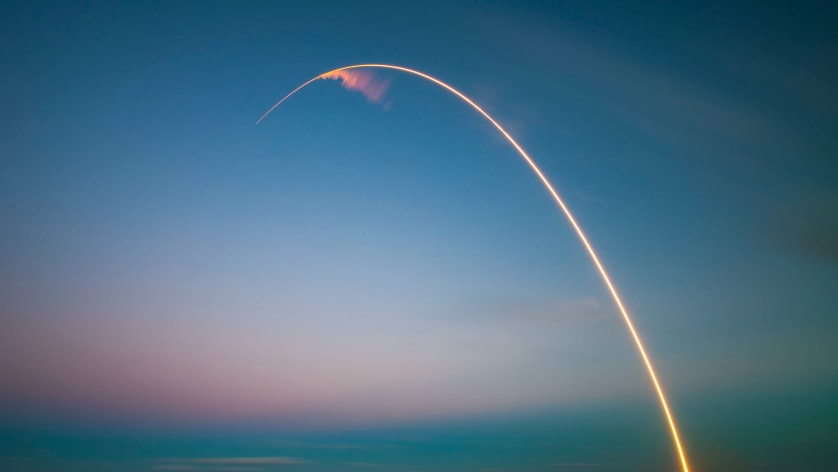What is "Aerospace Tech"? A quick definition

Aerospace is the application of technology to the design, manufacture and operation of aircraft and spacecraft.
What is Aerospace Engineering?
Aerospace engineering is a branch of engineering that deals with the construction and design of aircraft and spacecraft. Also, missiles, rocket propulsion systems and any other airborne, manned as well as unmanned, aircrafts.
History of Aerospace Engineering
The origins of aerospace engineering can be traced back to the late 19th century, when people started developing concepts and prototypes for airborne objects. The aerospace industry was truly born in 1903 when Wilbur and Orville Wright demonstrated the first example of an airplane capable of sustained flight. The brothers conducted extensive research and development which resulted in a breakthrough in developing an onboard system that would enable pilots to control the warping of the plane's wings for altitude control. In 1909, the Wright brothers developed the first plane capable of flying faster than 40 miles per hour.
The aerospace industry would continue to take shape throughout the 1950s, following several years of development spurred by World War I and World War II, as well as the introduction of commercial airliners in the 1930s. The production of superpowered jets and missile defense systems during the late 1950s made space exploration a more realistic goal.
The Space Age was a time of great rivalry between the United States and the Soviet Union, as both nations vied to be the first to explore beyond Earth's atmosphere. This competition came to a head in 1957 when the Soviets launched Sputnik, the first satellite, into orbit. Sputnik's success was due to the development of missile systems and the use of rockets with similar designs to launch small payloads into space. Following the successful launch of the first human-piloted spacecraft by Yury A. Gagarin aboard the Soviet Union’s Vostok 1, several additional satellites were launched into orbit. The aerospace industry has seen many modern successes, including manned missions to the moon, the exploration of Mars by rovers, an intricate system of navigational satellites launched into space and the permanent installation of an International Space Station in orbit.
A vector image of a rocket taking off from a platform, with the caption "The field of study that deals with the design, construction, and operation of aircraft and missiles"
Aeronautical engineering is the field of engineering that deals with the design, construction, and science of aircraft made for flight within the earth's athmosphere.
Astronautical engineering is the science and technology that makes space exploration possible, including the construction of spacecraft and launch vehicles.
Aerospace Engineering: Different fields of application
The development of technology that can facilitate travel both above and below the Earth's atmosphere requires the expertise of engineers from multiple disciplines who must work together to design systems that are compatible with existing technology while also being sustainable enough to avoid the need for constant redesigns. Aerospace engineering is a highly specialized field that combines aspects of mechanical engineering, electrical engineering and materials science.
The science of aerodynamics deals with the motion of air and the interaction of air with solid bodies moving through it.
The science that deals with the relationship between heat, temperature, and energy is called thermodynamics. Within thermodynamics, the transformation from heat to energy and how it creates mechanical output is defined.
Celestial mechanics is the application of principles of physics to astronomical objects in order to understand and predict their motion.
Flight mechanics rely on four forces for successful flight: thrust, drag, weight, and lift. All of these forces must be balanced and react to changes in any other force to sustain flight. Engines, propellers, or rockets create thrust, drag slows a flying object down, weight is the effect gravity has on an object, and lift suspends flying objects in the air.
Propulsion is the application of force to an object in order to move it forwards.
Acoustics are crucial to maintaining a safe and manageable environment for those near a flying craft. Acoustics principles are applied when calculating noise in rockets or planes, as well as engine sounds and propulsion.
All aerospace engineering concepts are used when designing guidance and control systems in order to allow pilots and controllers to make adjustments as needed to maintain flight. They use GPS navigation to stay safe at bad visual conditions.
Aerospace Engineering Elements
Aerospace engineers need to have a deep understanding of numerous elements that are key to success in any aerospace field. Furthermore, these concepts, plus several others, are vital to constructing successful systems and playing a role in the future of aerospace capabilities.
- Mathematics
- Physics
- Fluid mechanics
- Astrodynamics
- Electrotechnology
- Materials science
- Avionics
- Flight testing
AEROSPACE COMPANIES TO KNOW
- SpaceX
- Boeing
- Collins Aerospace
- Firefly Aerospace
- Ball Aerospace
- Howmet Aerospace
- Jordan Aerospace
- Honeywell Aerospace
- Gulfstream Aerospace
WHAT DO AEROSPACE ENGINEERS DO?
Vector illustration of an airplane's front end
Research and development:
It is the duty of aerospace research engineers to evaluate designs and confirm that they meet engineering principles. Proposal assessment, feasibility determination, safety prioritization, and quality standards establishment are all part of the process of preparing to construct a safe and high-quality product.
Aircraft design:
Design teams are responsible for developing and concepting new technologies for use in aviation, defense systems and spacecraft.
Aircraft parts manufacturing:
Aircraft, aircraft parts, missiles, rockets and spacecraft manufacturers are responsible for the construction of their products.
WHAT DO AEROSPACE ENGINEERS DO?
Research and development:
It is the responsibility of aerospace research engineers to assess proposals and determine if they are technically and financially feasible, while always prioritizing safety and maintaining quality standards. Research and development teams also assess damaged or malfunctioning products to identify the sources of problems and develop solutions.
Aircraft, satellite and defense aerospace design:
Design teams are responsible for developing new technologies for use in aviation, defense systems and spacecraft.
Aerospace part manufacturing:
Part manufacturers have the responsibility to construct aircraft, aircraft parts, missiles, rockets and spacecraft. They may work in-house or with a third-party, but regardless, they need to closely collaborate with aerospace engineers to make sure that sensitive materials are handled properly and that products can withstand even the most difficult conditions.




















